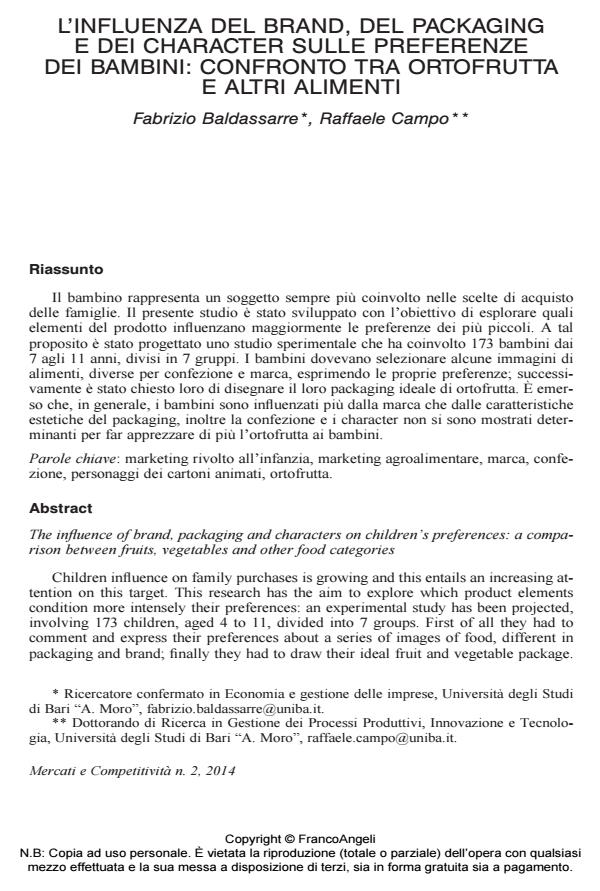L’influenza del brand, del packaging e dei character sulle preferenze dei bambini: confronto tra ortofrutta e altri alimenti
Titolo Rivista MERCATI E COMPETITIVITÀ
Autori/Curatori Fabrizio Baldassarre, Raffaele Campo
Anno di pubblicazione 2014 Fascicolo 2014/2
Lingua Italiano Numero pagine 21 P. 129-149 Dimensione file 161 KB
DOI 10.3280/MC2014-002007
Il DOI è il codice a barre della proprietà intellettuale: per saperne di più
clicca qui
Qui sotto puoi vedere in anteprima la prima pagina di questo articolo.
Se questo articolo ti interessa, lo puoi acquistare (e scaricare in formato pdf) seguendo le facili indicazioni per acquistare il download credit. Acquista Download Credits per scaricare questo Articolo in formato PDF

FrancoAngeli è membro della Publishers International Linking Association, Inc (PILA)associazione indipendente e non profit per facilitare (attraverso i servizi tecnologici implementati da CrossRef.org) l’accesso degli studiosi ai contenuti digitali nelle pubblicazioni professionali e scientifiche
Il bambino rappresenta un soggetto sempre più coinvolto nelle scelte di acquisto delle famiglie. Il presente studio è stato sviluppato con l’obiettivo di esplorare quali elementi del prodotto influenzano maggiormente le preferenze dei più piccoli. A tal proposito è stato progettato uno studio sperimentale che ha coinvolto 173 bambini dai 7 agli 11 anni, divisi in 7 gruppi. I bambini dovevano selezionare alcune immagini di alimenti, diverse per confezione e marca, esprimendo le proprie preferenze; successivamente è stato chiesto loro di disegnare il loro packaging ideale di ortofrutta. È emerso che, in generale, i bambini sono influenzati più dalla marca che dalle caratteristiche estetiche del packaging, inoltre la confezione e i character non si sono mostrati determinanti per far apprezzare di più l’ortofrutta ai bambini.
Parole chiave:Marketing rivolto all’infanzia, marketing agroalimentare, marca, confezione, personaggi dei cartoni animati, ortofrutta.
- A Play-Based Methodology for Studying Children: Playfication Raffaele Campo, Fabrizio Baldassarre, Rosalind Lee, in Systemic Practice and Action Research /2019 pp.113
DOI: 10.1007/s11213-018-9455-x
Fabrizio Baldassarre, Raffaele Campo, L’influenza del brand, del packaging e dei character sulle preferenze dei bambini: confronto tra ortofrutta e altri alimenti in "MERCATI E COMPETITIVITÀ" 2/2014, pp 129-149, DOI: 10.3280/MC2014-002007